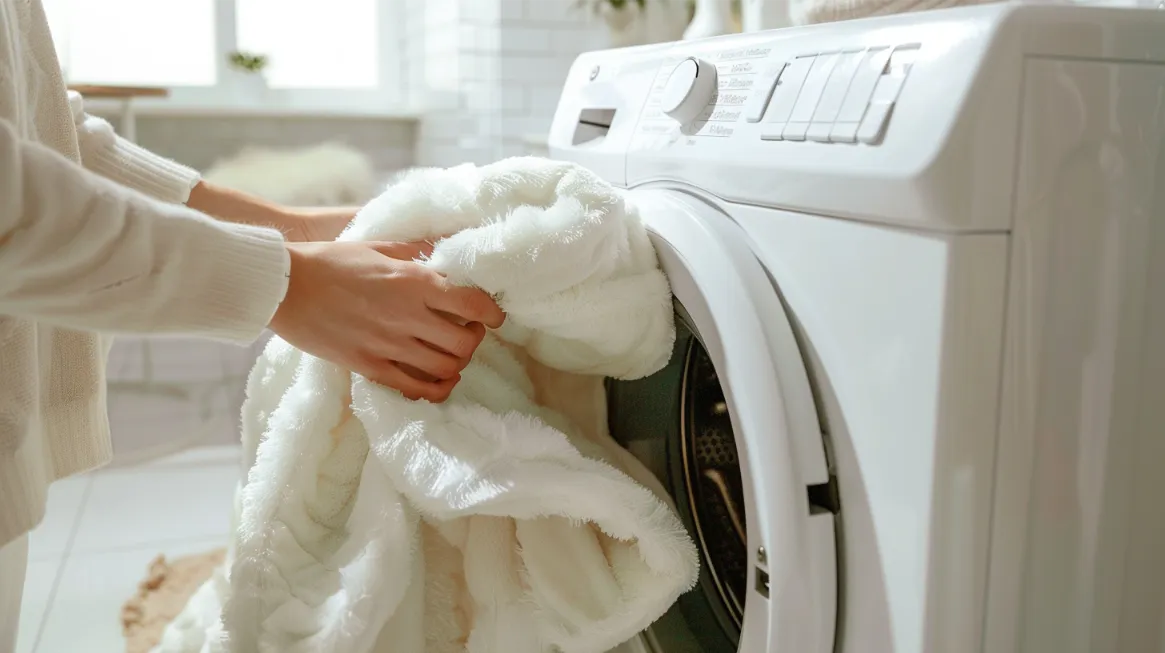Drying clothes outside may seem convenient and eco-friendly, but it’s essential to consider the potential drawbacks.
From health risks associated with allergens and pollutants to the potential damage caused by unpredictable weather conditions, there are several key reasons why you might want to reconsider this choice.
Additionally, the increased exposure to insects and animals, limited space for drying clothes outside, and local ordinances restricting outdoor drying add further complexity to the decision-making process.
In this discussion, we will delve into these concerns, providing a comprehensive understanding of why drying your clothes outside may not be the best idea.
Key Takeaways
- Health risks and indoor air quality concerns: Allergens and pollutants from outdoor drying can worsen symptoms for sensitive individuals.
- Potential damage from weather conditions: UV rays can fade colors and weaken fabrics, while rain can lead to musty odors and mold growth on damp clothes.
- Increased exposure to insects and animals: Insects, birds, and droppings can soil drying clothes, and fruit trees near clotheslines attract more insects and birds.
- Space optimization for drying clothes: Retractable clotheslines, vertical space usage, and rotary clotheslines offer solutions for limited yard space.
Health Risks From Allergens and Pollutants
Health risks associated with outdoor drying of clothes include potential exposure to allergens and pollutants, which can have adverse effects on individuals with sensitivities or respiratory conditions. Allergens such as pollen and mold spores can easily cling to clothes when dried outside, leading to discomfort and worsening symptoms for those with allergies or respiratory issues. These allergens can then be transferred to indoor environments, compromising indoor air quality and triggering allergic reactions or respiratory distress.
In addition to allergens, outdoor drying may result in clothes absorbing pollutants from nearby sources. Pollutants like vehicle emissions, industrial particles, or chemicals from nearby farms can adhere to clothes when dried outside. When these clothes are brought inside, these pollutants can be released into the indoor environment, further deteriorating indoor air quality. This can be particularly problematic for individuals with sensitivities or respiratory conditions, as they may experience exacerbation of symptoms or respiratory distress due to exposure to these pollutants.
To mitigate the health risks associated with outdoor drying, individuals with sensitivities or respiratory conditions should consider alternative drying methods, such as indoor drying racks or dryers with proper ventilation systems. Regularly cleaning and maintaining indoor air filters can also help improve indoor air quality and reduce allergens and pollutants in the home.
Potential Damage From Weather Conditions
Adverse weather conditions can pose potential risks and challenges to clothes that are dried outside. Exposure to different weather elements can lead to damage, such as fading colors and weakening fabrics. One of the main concerns is excessive sunlight exposure. Over time, the UV rays from the sun can cause colors to fade and fabrics to weaken. This can be particularly problematic for delicate or brightly colored garments.
Rain can also be problematic. If clothes are left outside during a rainstorm, they can become damp, leading to musty odors and potential mold growth. Additionally, strong winds can tangle and damage clothes on the line, possibly causing tears or stretching.
Furthermore, snow and ice can make clothes stiff and difficult to dry properly. When clothes freeze, their fibers become rigid, making water evaporating harder. This can prolong the drying process and increase the risk of damage.
In severe weather conditions, such as hailstorms, clothes left outside can suffer significant damage. Hail can cause tears, rips, or even punctures in the fabric, requiring additional cleaning or repairs.
To protect clothes from potential damage caused by weather conditions, it is recommended to dry them indoors using a dryer or on a drying rack in a well-ventilated area. This way, clothes can be shielded from the harmful effects of the weather, ensuring their longevity and quality.
Increased Exposure to Insects and Animals
When drying clothes outside, one must consider the increased exposure to insects and animals. Insects and birds can land on clothes while drying, leaving droppings that may require rewashing. These droppings can result in stains that can be challenging to remove from clothes hung outside. Furthermore, nearby fruit trees can attract more insects and birds to the area where clothes are drying, exacerbating the issue. Regular outdoor drying may necessitate more frequent washing to remove stains and debris caused by insects and animals interfering with the clothes.
To address this issue, there are a few solutions one can consider. Firstly, shaking the clothes before bringing them inside is advisable to dislodge any insects or droppings. This can minimize the chances of stains and reduce the need for rewashing. Additionally, clothespins or hangers that elevate the clothes off the ground can help deter animals from getting close to them. Consider placing the clothesline away from fruit trees or areas where animals will likely gather to reduce the attraction towards the drying clothes.
Limited Space for Drying Clothes Outside
Limited yard space can pose challenges for drying clothes outside, requiring innovative solutions to maximize efficiency and practicality. When faced with a small space, traditional outdoor clotheslines may not be viable. However, space-saving solutions, such as retractable clotheslines, can make outdoor drying a practical and efficient choice.
Here are three key considerations for drying clothes in limited yard space:
- Retractable clotheslines: These lines can be mounted on walls, fences, or any other suitable structure, providing a space-saving solution for drying clothes. They can be easily extended when needed and retracted when not in use, making them ideal for small spaces.
- Optimizing available space: In limited yard space, making the most of every inch is important. Consider using vertical space by installing multiple lines or a rotary clothesline that allows for the efficient drying of multiple garments simultaneously.
- Compliance with regulations: Some areas have restrictions on outdoor clotheslines due to aesthetic or neighborhood regulations. In such cases, exploring alternative solutions, such as indoor drying racks or communal drying areas within apartment complexes, may be necessary.
Local Ordinances Restricting Outdoor Drying
Local ordinances play a significant role in restricting the practice of outdoor clothes drying in many areas. Homeowners associations and cities often have regulations in place that prohibit the use of outdoor clotheslines. Violating these local ordinances can result in fines for residents who dry their clothes outside. To ensure compliance, some areas permit clotheslines as long as they are not visible from the street or neighboring properties. Complaints from neighbors about visible laundry on outdoor lines can lead to the enforcement of these regulations.
To avoid violations and potential fines, residents must check their local rules and regulations before setting up an outdoor clothesline. Understanding the restrictions can help residents navigate the complex landscape of outdoor drying regulations. Additionally, homeowners associations and cities can consider implementing more flexible regulations that allow for outdoor drying in a manner that is respectful of neighbors’ concerns.
Finding a balance between individual preferences and community aesthetics is crucial when developing outdoor drying regulations. Providing guidelines on where clotheslines can be placed or exploring alternative drying methods, such as retractable clotheslines or drying racks, can help address concerns while allowing residents to enjoy the benefits of outdoor drying. By taking a solution-oriented approach and considering the needs and preferences of all stakeholders, communities can develop regulations that balance practicality and aesthetics.
Frequently Asked Questions
Why You Shouldn’t Dry Clothes Outside?
Drying clothes outside can result in exposure to outdoor allergens, such as pollen and mold spores, posing risks to individuals with sensitivities. Sunlight can also fade colors and damage garments. Additionally, local regulations may prohibit line drying, leading to potential fines.
Why Should We Avoid Drying?
Drying clothes outside may not be advisable due to various factors such as potential damage from sun exposure, absorption of outdoor allergens, soiling from bird droppings and animal interference, possible violation of local regulations, and aesthetic considerations.
Why Should You Not Over Dry Clothes?
Over-drying clothes can lead to excessive wear and tear on fabric fibers, causing them to weaken and deteriorate faster. It can also result in stiffness, roughness, color fading, increased static cling, higher energy consumption, and environmental impact.
Will Clothes Dry Outside at 5 Degrees?
At 5 degrees Celsius, clothes can still dry outside, but the process will be slower due to lower temperatures and the potential for water to freeze on the clothes. Windy conditions can help speed up drying. Clothes may feel stiff.










